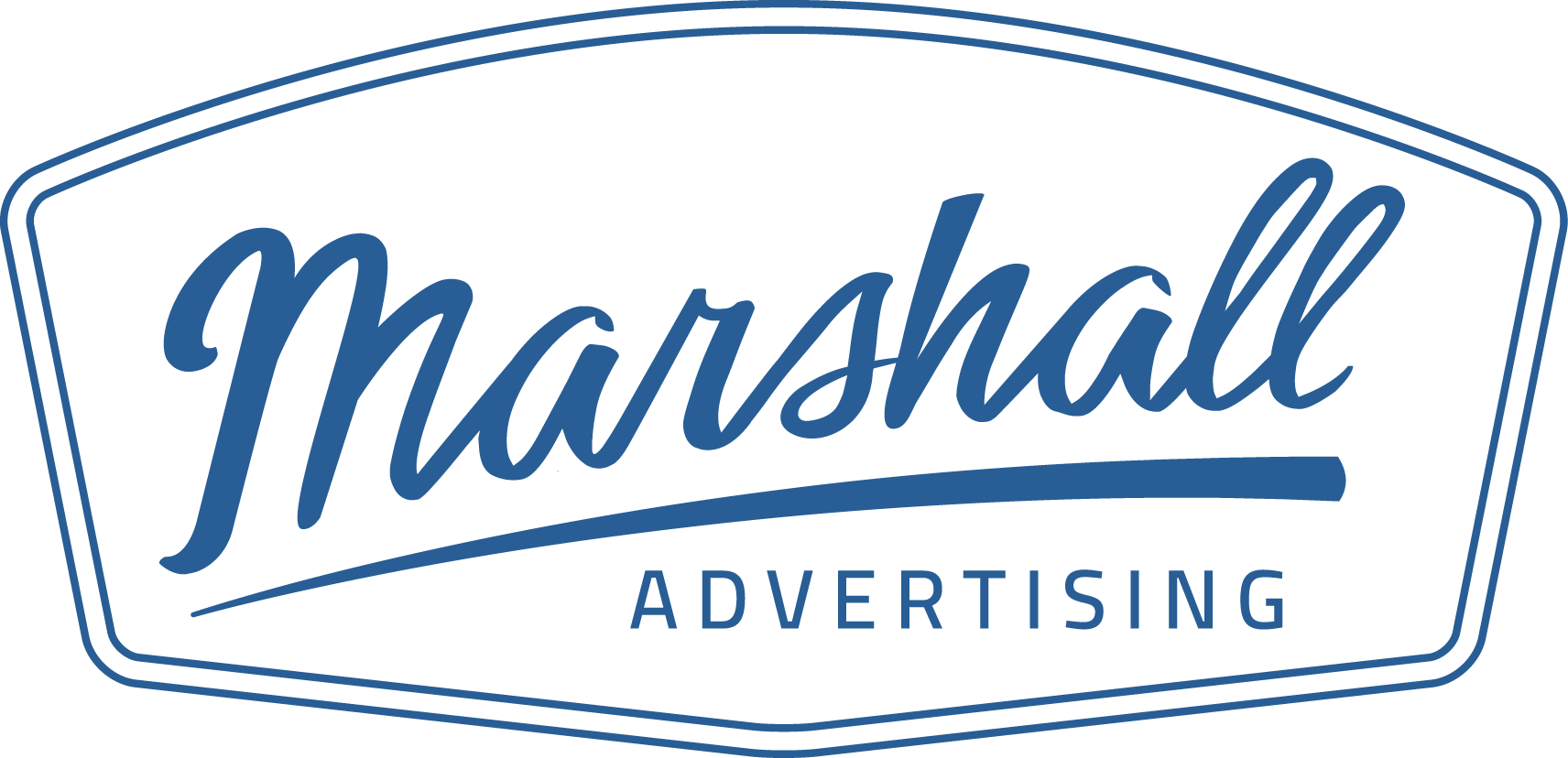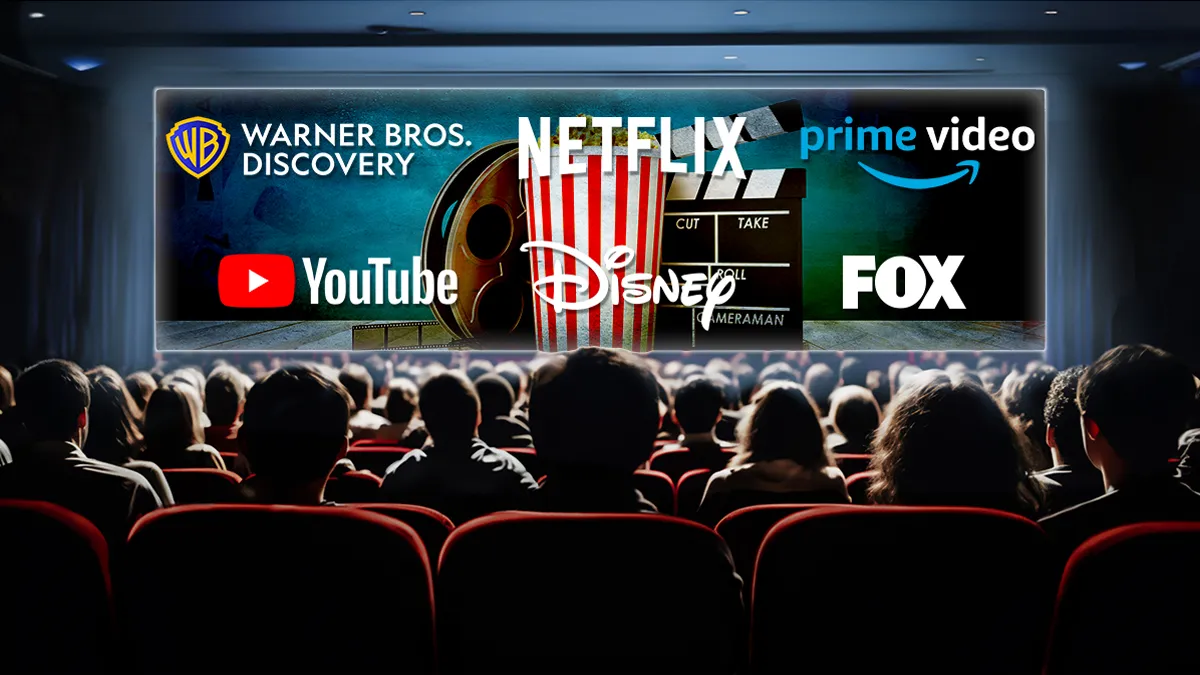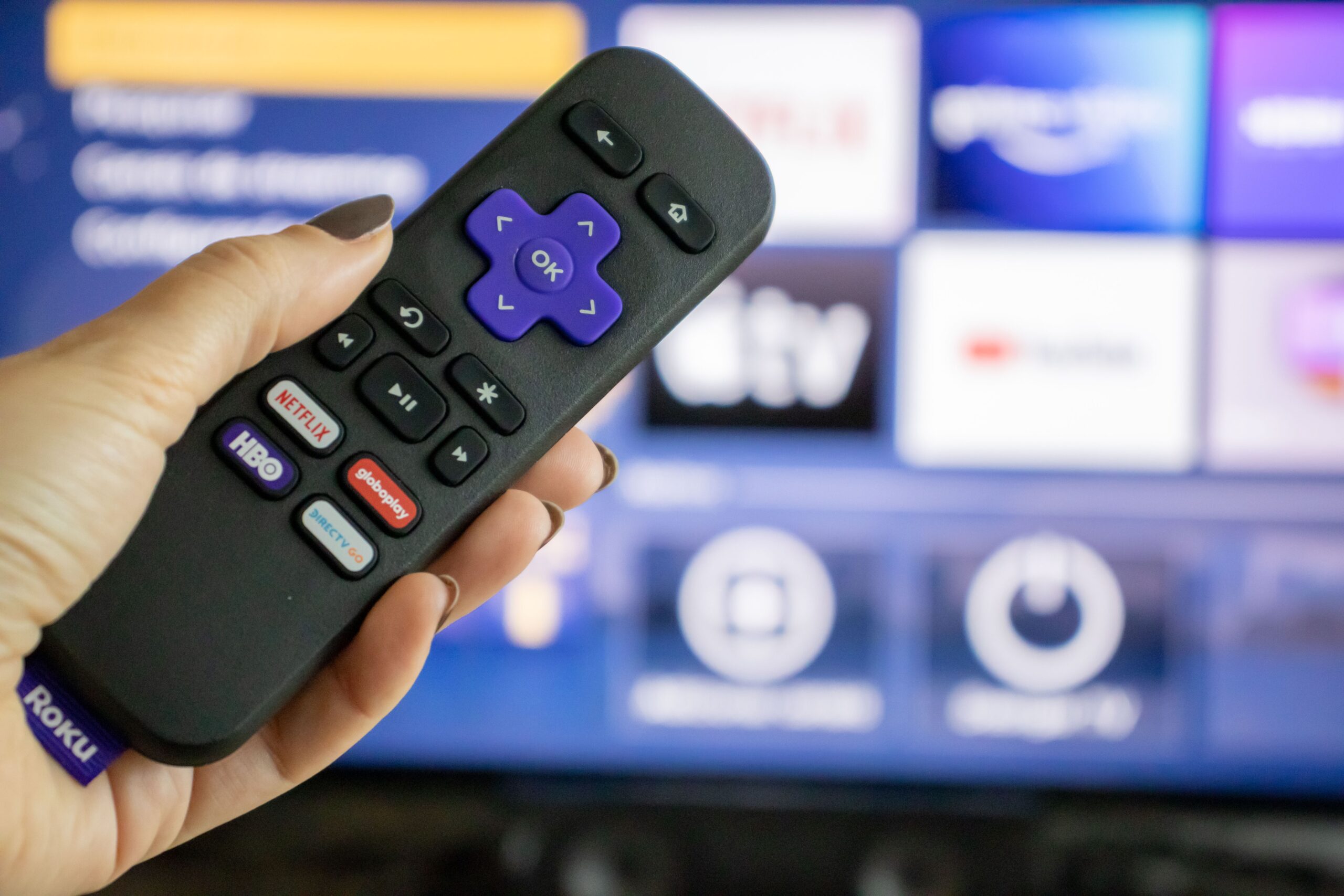Over the past decade, the way people consume video content has undergone a dramatic shift. The rise of over-the-top (OTT) platforms like Netflix, Amazon Prime Video, and Hulu has revolutionized the entertainment industry, offering viewers an unprecedented level of control and choice over what they watch, when they watch it, and on which devices. As traditional cable TV subscriptions decline, OTT platforms continue to gain popularity, with global OTT revenues projected to reach over $300 billion this year.
This seismic shift in viewing habits presents a unique opportunity for marketers to reach highly engaged audiences through OTT advertising. By delivering targeted, personalized ads directly to viewers streaming their favorite content, brands can effectively connect with consumers in a way that traditional TV advertising simply cannot match.

What is OTT Advertising?
OTT advertising refers to the delivery of ads via streaming media services that bypass traditional TV providers, reaching viewers directly on their internet-connected devices such as smart TVs, smartphones, tablets, and gaming consoles. These ads are typically served during breaks in the streaming content, similar to traditional TV commercials, but with the added benefit of advanced targeting capabilities and detailed performance analytics.
The OTT advertising ecosystem encompasses a wide range of platforms and services, including:
- Subscription Video on Demand (SVOD): Video content that requires access to a subscription video on demand service. Are you paying for the service? Yes? Then it’s an SVOD service. Examples include Netflix, Hulu, and Amazon Prime.
- Advertising-based Video on Demand (AVOD): Free, Ad-supported video-on-demand platforms that make their money off ads in between their content. As a result, the platforms are free for viewers. Are you paying for the service? No? Do ads run between the content? Yes? Then it’s an AVOD service. Examples include: YouTube, Crackle, PlutoTV, Tubi.
- Hybrid Models: Services like Hulu, Netflix and CBS All Access that offer both ad-supported and ad-free subscription tiers.
- Virtual Multichannel Video Programming Distributors (vMVPDs): These are distributors that aggregate live and on-demand television but deliver the content over the internet. Does the digital service offer content similar to how cable and broadcast do? Yes? Then it’s a vMVPD. Examples include: Sling TV, DIRECTV Stream, YouTube TV, Hulu Live TV, fuboTV.
Benefits of OTT Advertising
- Precise Targeting: OTT platforms collect extensive data on viewer demographics, interests, and behaviors, enabling advertisers to target specific audience segments with unprecedented accuracy. This ensures that ads reach the most relevant viewers, minimizing waste and maximizing ROI.
- Engaged Viewers: OTT audiences are highly engaged, often binge-watching their favorite shows for extended periods. This presents an opportunity for brands to capture viewers’ attention with compelling, memorable ads that resonate with their interests.
- Non-Skippable Ads: Many OTT platforms feature non-skippable ads, ensuring that viewers are exposed to the full message. This can lead to higher ad completion rates and better brand recall compared to skippable or fast-forwarded ads on traditional TV.
- Cross-Device Reach: OTT content is accessible across a wide range of devices, allowing advertisers to reach viewers wherever they choose to stream. This cross-device reach helps to reinforce brand messaging and drive engagement across multiple touchpoints.
- Measurable Results: OTT advertising provides detailed performance metrics, including ad impressions, completion rates, and audience demographics. This data enables marketers to optimize their campaigns in real-time, ensuring that their ad spend is allocated effectively and efficiently.
The Rise of Cord-Cutting
The shift from traditional TV to OTT is evident in the growing trend of cord-cutting. According to recent studies, the number of U.S. households without a cable or satellite TV subscription is projected to reach 46.6 million by 2024, up from 21.9 million in 2019. This rapid acceleration in cord-cutting underscores the importance for brands to adapt their advertising strategies to reach audiences on OTT platforms.
Types of OTT Content
OTT platforms offer a variety of content types to cater to different viewer preferences:
-
- Video on Demand (VOD): Pre-recorded content, such as movies and TV shows, that viewers can access at any time.
-
- Live Streaming: Real-time broadcasts of events, sports, and news, similar to traditional live TV.
-
- Ad-supported Video on Demand (AVOD): VOD content that is monetized through advertisements, offering viewers free access to a wide range of programming.
-
- Subscription Video on Demand (SVOD): Ad-free VOD content accessible through a monthly subscription fee.
Setting OTT Campaign Goals
As with any advertising campaign, setting clear goals and objectives is crucial for the success of your OTT marketing efforts. When developing your OTT strategy, consider the following:
- Target Audience: Define your target audience based on demographics, interests, and viewing behaviors to ensure your ads reach the most relevant viewers.
- Brand Awareness: If your primary goal is to increase brand awareness, focus on metrics such as ad impressions, reach, and frequency.
- Engagement: To drive viewer engagement, prioritize metrics like video completion rates, click-through rates, and time spent viewing.
- Conversion: If your goal is to drive conversions, track metrics such as cost per acquisition, return on ad spend, and attribution data.
Key Performance Indicators (KPIs) for OTT
To measure the success of your OTT campaigns, monitor the following KPIs:
-
- Video Completion Rate (VCR): The percentage of viewers who watch your ad to completion, indicating the effectiveness of your ad creative and targeting.
- Cost per Completed View (CPCV): The average cost for each viewer who watches your ad to completion, helping you assess the cost-effectiveness of your campaign.
- Reach and Frequency: The number of unique viewers exposed to your ad (reach) and the average number of times each viewer sees your ad (frequency), allowing you to optimize your targeting and avoid overexposure.
- Audience Demographics: Detailed data on the demographics of viewers who engage with your ads, enabling you to refine your targeting and creative strategies.
Audience Targeting with OTT
In the world of OTT advertising, reaching the right audience is crucial for campaign success. As a media buying agency at the forefront of the industry, Marshall Advertising understands the importance of leveraging advanced targeting capabilities to ensure your brand message resonates with the most relevant viewers.
Leveraging First and Third-Party Audience Data
By utilizing a combination of first and third-party data, marketers can reach viewers based on a wide range of criteria:
First-Party Data
This data is collected directly from your own sources, such as website interactions, CRM data, and customer purchase history. By leveraging first-party data, you can create custom audience segments based on your existing customers’ demographics, interests, and behaviors, allowing you to target lookalike audiences on OTT platforms.
Third-Party Data
This data is acquired from external sources, such as data management platforms (DMPs) and data aggregators. Third-party data providers offer a wealth of information on consumer demographics, interests, and purchase behaviors, enabling you to target specific audience segments across multiple OTT platforms.
Targeting by Demographics, Interests, and Behaviors
OTT platforms offer a wide range of targeting options, allowing you to reach viewers based on specific criteria:
- Demographics: Target audiences based on age, gender, income, education, and other demographic factors to ensure your ads reach the most relevant viewers.
- Interests: Reach viewers based on their interests, such as sports, travel, fashion, or technology, to align your brand message with their preferences and passions.
- Behaviors: Target audiences based on their online behaviors, such as search history, content consumption, and purchase patterns, to reach viewers who are most likely to engage with your brand.
Cross-Platform Targeting
One of the key benefits of OTT advertising is the ability to reach viewers across multiple platforms and devices. By leveraging cross-platform targeting, you can deliver a consistent brand message to your target audience, regardless of where they choose to stream their content. This approach helps to reinforce your message and drive engagement across the entire customer journey.
At Marshall Advertising, we work closely with our clients to develop data-driven targeting strategies that maximize the impact of their OTT campaigns. Our team of experts leverages industry-leading tools and partnerships to ensure your ads reach the right viewers at the right time, driving measurable results for your brand.
OTT Advertising Formats
In addition to precise audience targeting, the success of your OTT campaign depends on delivering engaging ad experiences that capture viewers’ attention and drive action. OTT platforms offer a variety of ad formats, each with its own strengths and considerations.
1. Pre-Roll Ads
Pre-roll ads are short video advertisements that play before the main content begins. These ads are typically 15-30 seconds in length and are often non-skippable, ensuring that viewers are exposed to your entire message.
Pros:
-
- High visibility and viewer engagement
-
- Guaranteed ad views and completion rates
-
- Suitable for brand awareness and top-of-funnel marketing
Cons:
-
- Potential for viewer annoyance if ads are too long or irrelevant
-
- Limited time to convey complex messages
2. Mid-Roll Ads
Mid-roll ads are video advertisements that play during natural breaks in the main content, similar to traditional TV commercials. These ads can be longer than pre-roll ads, typically ranging from 30 seconds to 1 minute.
Pros:
-
- Longer ad duration allows for more detailed messaging
-
- Viewers are more engaged during content breaks
-
- Suitable for brand storytelling and product demonstrations
Cons:
-
- Potential for viewer disruption and ad skipping
-
- Requires careful placement to avoid interrupting content flow
At Marshall Advertising, we work with our clients to develop OTT ad strategies that leverage the most effective formats for their specific goals and target audiences. Our team of creative experts and media buyers collaborate to ensure that your ad content is compelling, relevant, and optimized for maximum impact across OTT platforms.

Media Planning and Buying Best Practices
When planning your OTT campaign, it’s crucial to select the advertising formats that best align with your brand’s goals and target audience. Our team works closely with clients to determine the ideal mix of OTT advertising formats based on their unique needs, target audiences, and performance goals.
Connecting with OTT Ad Publishers and Networks
To ensure your OTT ads reach the right viewers across the most relevant platforms, it’s essential to partner with trusted publishers and networks. At Marshall Advertising, we’ve established direct relationships with leading OTT publishers and networks, providing our clients with access to premium inventory and advanced targeting capabilities.
Our partnerships span the OTT ecosystem, including:
- Streaming Platforms: We work directly with top-tier streaming platforms like Hulu, Roku, and Amazon Fire TV to secure premium ad placements and leverage their proprietary audience data for precise targeting.
- Ad Networks: Our relationships with leading OTT ad networks, such as Magnite , enable us to access a wide range of inventory across multiple publishers, ensuring optimal reach and efficiency for your campaigns.
- Programmatic Marketplaces: We utilize programmatic buying platforms, such as The Trade Desk and Clearline, to reach targeted audiences at scale while maintaining control over bid prices and campaign parameters.
Best Practices for Planning and Executing OTT Ad Buys
To maximize the effectiveness of your OTT ad buys, consider the following best practices:
-
- Define Clear Objectives: Establish specific, measurable goals for your OTT campaign, such as increasing brand awareness, driving website traffic, or generating conversions.
- Know Your Audience: Leverage first and third-party data to develop a deep understanding of your target audience’s demographics, interests, and viewing behaviors.
- Optimize Creative for OTT: Ensure your video and display ads are tailored for the OTT environment, with compelling visuals, clear messaging, and strong calls-to-action.
- Test and Refine: Continuously monitor your campaign performance and conduct A/B tests to optimize your targeting, creative, and bid strategies for maximum impact.
- Measure and Attribute: Utilize advanced measurement and attribution tools to track your OTT campaign’s performance across platforms and devices, enabling data-driven optimization and ROI analysis.
At Marshall Advertising, our media planning and buying experts employ these best practices to deliver customized OTT strategies that drive measurable results for our clients.
Optimizing and Improving Performance
The key to maximizing the ROI of your OTT advertising efforts lies in continuous optimization and performance improvement. By leveraging advanced analytics and attribution tools, brands can gain deep insights into campaign performance, identify areas for improvement, and make data-driven adjustments to enhance results.
Testing Different Targeting Parameters, Creatives, and Calls-to-Action
To identify the most effective combinations of targeting, creative, and messaging for your OTT campaigns, it’s essential to conduct ongoing testing and experimentation. This can include:
-
- Audience Segmentation: Test different audience segments based on demographics, interests, and behaviors to determine which groups are most responsive to your ads.
-
- Creative Variations: Experiment with different video and display ad creatives, testing elements such as length, messaging, visuals, and calls-to-action to optimize engagement and conversion rates.
-
- Placement and Timing: Test different ad placements (pre-roll, mid-roll, etc.) and dayparting strategies to identify the most effective times and contexts for reaching your target audience.
Analyzing Performance Data to Identify Improvement Opportunities
By leveraging the robust analytics and reporting capabilities offered by OTT ad platforms, brands can gain valuable insights into campaign performance and identify areas for improvement. Key metrics to monitor include:
-
- Video Completion Rate (VCR): Track the percentage of viewers who watch your video ads to completion, identifying opportunities to optimize creative and targeting for higher engagement.
-
- Click-Through Rate (CTR): Monitor the percentage of viewers who click on your display ads or calls-to-action, indicating the effectiveness of your messaging and creative in driving desired actions.
-
- Cost per Acquisition (CPA): Measure the cost of acquiring new customers or driving specific conversions, optimizing your targeting and bid strategies to maximize ROI.
Important Insights
Throughout this article, we’ve explored the essential elements of a successful OTT advertising strategy:
Understanding the OTT Landscape: The rise of OTT platforms and the trend of cord-cutting have created a unique opportunity for brands to reach highly engaged audiences through targeted, personalized advertising.
Leveraging the Benefits of OTT: OTT advertising offers precise targeting, engaged viewers, non-skippable ads, cross-device reach, and measurable results, making it a powerful tool for brands seeking to connect with consumers in the era of streaming.
Setting Clear Campaign Goals: Establishing specific, measurable objectives and tracking key performance indicators (KPIs) is crucial for the success of your OTT marketing efforts.
Mastering Audience Targeting: By leveraging first and third-party data, marketers can reach viewers based on demographics, interests, and behaviors across multiple OTT platforms.
Choosing the Right Ad Formats: OTT platforms offer a variety of ad formats, each with its own strengths and considerations. Selecting the most effective formats for your brand’s goals and target audience is essential for campaign success.
Implementing Best Practices for Media Planning and Buying: Partnering with trusted publishers and networks, defining clear objectives, optimizing creative for OTT, and utilizing advanced measurement and attribution tools are key best practices for maximizing the effectiveness of your OTT ad buys.
Continuously Optimizing and Improving Performance: By testing different targeting parameters, creatives, and calls-to-action, analyzing performance data, and making data-driven adjustments, brands can continuously optimize their OTT campaigns for maximum ROI.
Conclusion
As the OTT advertising landscape continues to evolve, partnering with a trusted media buying agency like Marshall Advertising can help serious businesses navigate the complexities of this exciting new frontier. With our extensive expertise, cutting-edge technology partnerships, and data-driven approach, we empower our clients to develop customized OTT strategies that deliver measurable results and drive business growth.
At Marshall Advertising, we are committed to staying at the forefront of the OTT advertising industry, providing our clients with the insights, tools, and support they need to succeed in the era of streaming. If you’re ready to unlock the full potential of OTT advertising for your brand, contact us today to schedule a consultation and learn how our team can help you achieve your marketing goals.





